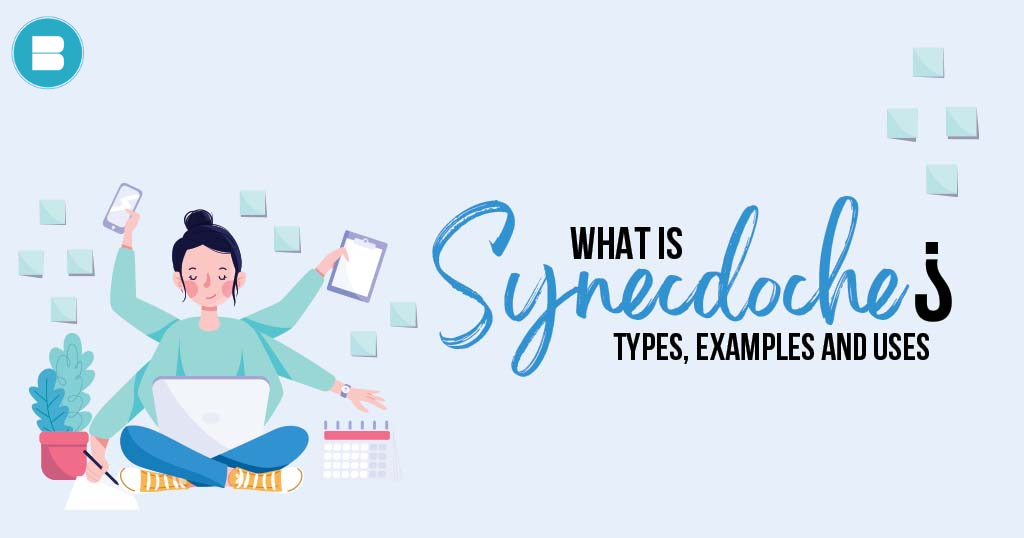
What is Synecdoche: Definition, Types, Uses, & Examples.
We know what basic question you have “What is Synecdoche”. A synecdoche is a figure of speech in which a portion of anything is used to represent the entire thing or vice versa. In fact, it comes from the Greek term synecdoche, which means “simultaneous meaning.” Synecdoche is a literary device that permits a tiny component of anything to stand in for the bigger whole in a rhetorical sense. Synecdoche can also function in reverse, with the greater total standing in for a smaller component of something. Read: Who is Arun Bhatnagar? Background, Writing Career, and much more… Synecdoche is a device that writers can use to express a phrase or idea in a different way by utilising a characteristic of that word or notion. This allows for expression diversity and creates an effect for the reader. For example, “The White House said…” when referring to the President or “All hands on deck” when referring to the crew of a ship. It can also be used in literature, poetry, and other forms of creative writing to convey deeper meaning or symbolism. Majorly, it can be a powerful tool for poets, novelists, and other writers to convey deeper meaning and symbolism in their work. Difference between Synecdoche and Metonymy. Synecdoche and metonymy are both figures of speech that involve the use of one word or phrase to refer to another related concept, but they differ in the type of relationship they establish between the two concepts. Synecdoche is a type of metonymy in which a part of something is used to represent the whole, or the whole is used to represent a part. The relationship between the two concepts is one of inclusion, where the part is included in the whole. Metonymy, on the other hand, is a figure of speech in which one word or phrase is used to refer to another concept that is closely related to it, but not included in it. The relationship between the two concepts is one of association, where the two concepts are closely associated with each other. Read: List of 10 Best Libraries in Indore for Bookworms. For example, in the phrase “The pen is mightier than the sword,” the word “pen” is used to represent writing and “sword” is used to represent military force. Here “pen” and “sword” have a close association with writing and military force respectively, but are not included in it. This is an example of metonymy. On the other hand, in the phrase “All hands on deck,” “hands” is used to represent the crew of the ship. Here “hands” are included in the crew, and this is an example of synecdoche. In summary, synecdoche is a specific type of metonymy where a part is used to represent the whole, or the whole is used to represent a part. While metonymy is a more general term that refers to the use of one word or phrase to refer to another concept that is closely related to it, but not included in it. You may also like: Where the Red Fern Grows: Book Summary & Themes You may also read: Left Behind Series Books in Order: Where to Begin What is Synecdoche? Types of Synecdoche. Synecdoche can be a subtle and nuanced form of figurative language, and there may be overlap between the different types. In conclusion, Synecdoche is a literary device that allows us to give human characteristics to inanimate objects, imbuing them with new meanings and making them more relatable to audiences. It is often used in political contexts, such as referring to countries and organizations as having a footing or in the wrong hands. Read: List of 10 best book clubs in Mumbai that everyone should visit. Synecdoche is a powerful tool that can bring depth and meaning to complex concepts and ideas, making them more memorable and impactful. Understanding and utilizing Synecdoche can greatly enhance one’s ability to communicate and convey ideas effectively.
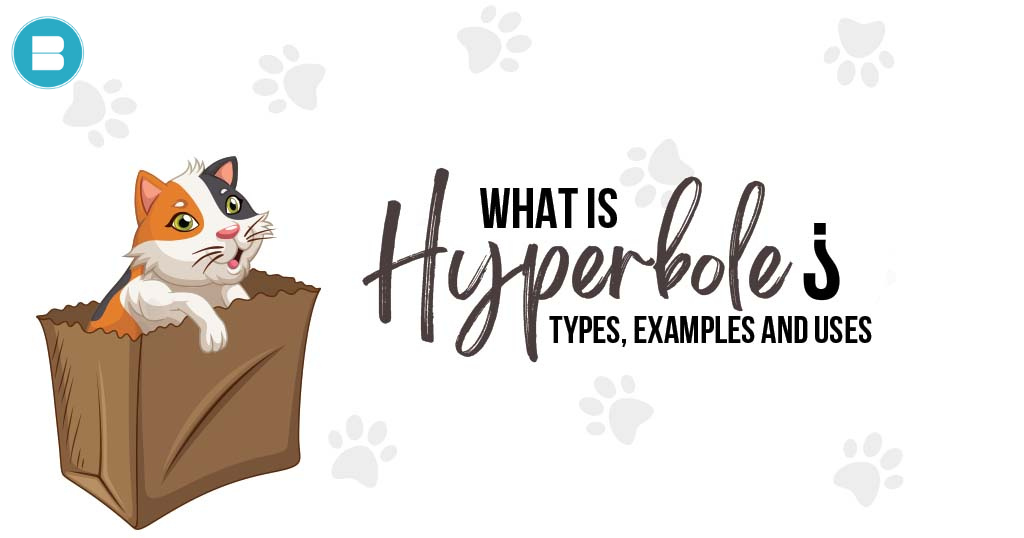
Hyperbole: Definition, Types, Uses, & Examples.
Many people have a doubt “What is Hyperbole“? Exaggeration is the name of the game with hyperbole, a literary tool that packs a punch by amplifying language to new heights. With hyperbole, the words spoken or written are not meant to be taken at face value, but rather to create emphasis and impact. You may also like: Literary Fiction vs Genre Fiction: Definition & Examples Whether used to drive home a serious point, inject humor or irony, hyperbole is a powerful device that adds a dynamic flourish to any form of communication. To be specific, hyperbole is a figure of speech in which exaggeration is used for emphasis or effect. It is not meant to be taken literally. For example – “You can’t! It’s impossible! I’m far too busy, so ask me now before I again become sane.”– The Incredibles In this quote from The Incredibles, The speaker, who is a character from the movie “The Incredibles,” is using exaggeration to express their level of busyness. They are saying that they are so busy, it is impossible to ask them and that they may not be sane in the future time. This is not meant to be taken literally but is used for emphasis or comedic effect to express their level of busyness. Now as both Hyperbole and Overstatement are similar figure of speech as they both involve exaggeration; it often gets confusing for the readers and writers to understand and analyse. You may also like: The Rise of Audiobooks: A Game-Changer for Modern Bookworms What is the difference between Hyperbole and Overstatement? Hyperbole is a literary device that is used to exaggerate or overstate something for emphasis or effect. It is often used in literature, poetry, and everyday speech to create emphasis, convey emotion, or add humour. For example, if someone says “I’m so tired, I could sleep for a week,” they are not actually going to sleep for a week, but they are emphasizing how tired they feel. On the other hand, overstatement is a similar figure of speech that is also used to exaggerate or overstate something, but it is not necessarily intended to be taken literally. The main purpose of an overstatement is to emphasize or clarify a point, rather than to create a specific effect. For example, if someone says “This is the best day of my life,” they might not have meant it literally, but they are using exaggeration to emphasize how much they are enjoying that day. It might not be the best day of their life, but it might be one of the most memorable or enjoyable days they have had. In short, Hyperbole and overstatement are similar in that they both involve exaggeration, but they are used in different ways. Hyperbole is used to create an effect and overstatement is used to emphasize a point. You may also read: Top 10 Rhetorical Devices Every Writer Should Know What is Hyperbole? What are the types of Literary Tool? There are several types of hyperbole that are commonly used in literature and everyday speech: Now to present you something that I have written in a play-like structure to explain hyperbole before I conclude… Hyperbole, oh Hyperbole, how you add that extra oomph to our words. You take the ordinary and elevate it to the extraordinary, the mundane to the magnificent. With you, we can express our emotions with heightened intensity, our jokes with added hilarity, and our points with added impact. So, here’s to you, Hyperbole, the literary device that packs a punch and adds that extra something special to our words. May we continue to exaggerate with abandon, knowing that our audience will understand, and appreciate, the added emphasis and impact that you bring. I hope that you understood how exaggerating these serenading paragraphs were – therefore this is personification, hyperbole, and irony – all in one. You may also like: Literary Fiction vs Genre Fiction: Definition & Examples I hope your next book is going to be as famous as Harry Styles! Publish your book for free with BlueRoseONE and become a bestselling author. Don’t let your dream of becoming an author fade away, grab the opportunity now and publish your book – be it fiction, non fiction, poetry or more. Happy Reading!
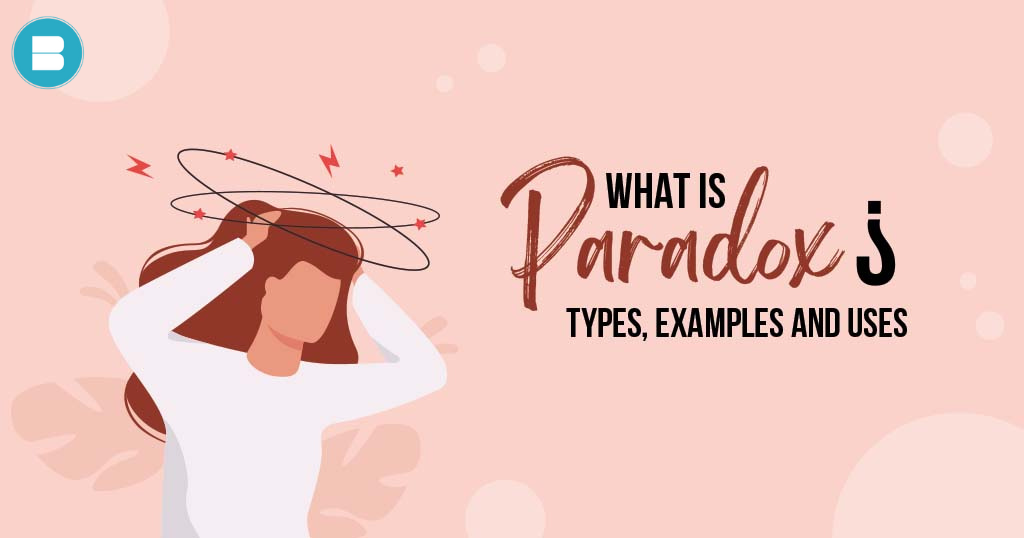
What is Paradox: Definition, Types, Uses, & Examples.
Many people have a doubt “What is Paradox“? A paradox is like a riddle wrapped in a mystery, appearing at first glance as a contradiction but, upon deeper contemplation, revealing a hidden truth. This literary device serves as a catalyst, prompting the reader to peel back the layers and uncover a logical nugget buried within the seemingly self-contradictory statement. Read: What is Parallelism? Definition, Types, & Examples of Parallelism. By doing so, the reader is able to shift their perspective and embrace new and alternative ways of understanding. Paradox is one of the most layered literary devices. The layers are never-ending, but when you finally reach the end, it is the most satisfying feeling. It’s like you’ve won a lost battle. (Maybe) This quote seems contradictory, as telling the truth and lying are generally considered to be opposite actions. However, upon further examination, it can be understood to be true in the context of the speaker’s character or situation. The speaker, Scarface, is a fictional character from the movie of the same name who is portrayed as a ruthless criminal and drug lord. In this quote, Scarface is likely emphasising the fact that he is always true to his own nature, even when he’s lying. He is admitting that he is a person who lies, but also implying that he is also someone who always tells the truth about himself—that is, he is a criminal who lies, but he also always speaks truthfully about who he is, which is a criminal. In this way, the quote is a paradox, which emphasises the idea that people can be true to their own nature or character even when they are doing something that is generally considered to be dishonest. It also suggests that the meaning of truth can be subjective, and what one person considers to be the truth may not be the same as what another person considers to be the truth. The quote also implies that there is a distinction between honesty and morality in Scarface’s world, and he adheres to his own set of rules and values, even if they contradict society’s norm.This adds complexity to the character and makes the audience think about the different aspects of morality, honesty, and what it means to be truthful. Only ten words, but when they were revealed, we saw an entire being and how its mind works, what its reality is, what it believes in…As a result, it was demonstrated that onions face competition.*just kidding* Simply stated, a paradox is a statement or situation that contradicts itself or seems to be untrue or impossible. It’s a type of literary device that presents an idea that contradicts itself, yet it can still be true. Therefore, it can be confused with an oxymoron, but unlike an oxymoron, which is only a phrase or combination of words, a paradox can be a full sentence, a statement, or a concept. You may also like: Print on Demand vs Traditional Publishing: Which is Right for You? What is the distinction between an oxymoron and a paradox? An oxymoron is a phrase or combination of words that contains elements that contradict each other. It is a figure of speech in which two words with opposing or contradictory meanings are combined to create a rhetorical effect. For example, “bittersweet” or “pretty ugly” are examples of an oxymoron. On the other hand, a paradox is a statement or situation that contradicts itself or seems to be untrue or impossible. It’s not only a combination of words but can also be a full sentence, a statement, or a concept. A paradox presents an idea that contradicts itself, yet it can still be true. For example, “less is more” or “This statement is false” are examples of a paradox. Another key difference between the two is that oxymorons are often used for poetic effect or to express complex emotions, while paradoxes are often used for logical effect and to challenge readers to think critically about the meaning. Read: Learn easy hacks on how to promote your book on Instagram. Oxymorons are a specific type of figure of speech that creates a rhetorical effect using contradictory words. Paradoxes, on the other hand, are more general and can be any type of statement that contradicts itself but makes sense when you think about it. Types of Paradoxes There are several different types of paradox, each with its own unique characteristics. Some common types of paradoxes include: These are just a few examples of the different types of paradoxes. Paradoxes can be found in many fields, including literature, science, mathematics, and philosophy. You may also like: What is Situational Irony? Definition, Examples and Tips for Writers They can be used to explore abstract concepts, challenge assumptions, and create a sense of irony or humor. How to write a paradox of your own? Writing a paradox can be a great way to add depth and complexity to your writing, but it’s important to do it in a way that doesn’t confuse your readers. Here are some tips to help you write effective paradoxes: You may also like: Top 10 Real Life Stories to Read Online Writing an effective paradox requires a clear understanding of what you want to say, using familiar concepts and ideas, making sure the paradox makes sense and not overusing it. By understanding and using the paradoxes effectively, writers can create more powerful and evocative writing that can challenge readers’ perspectives and make them think more critically. So if you ever create a paradox, just know you’re unique. Publish your book for free with BlueRoseONE and become a bestselling author. Don’t let your dream of becoming an author fade away, grab the opportunity now and publish your book – be it fiction, non fiction, poetry or more. Happy Reading! You may also read: Fatal Flaw: Definition, Types, Examples and More
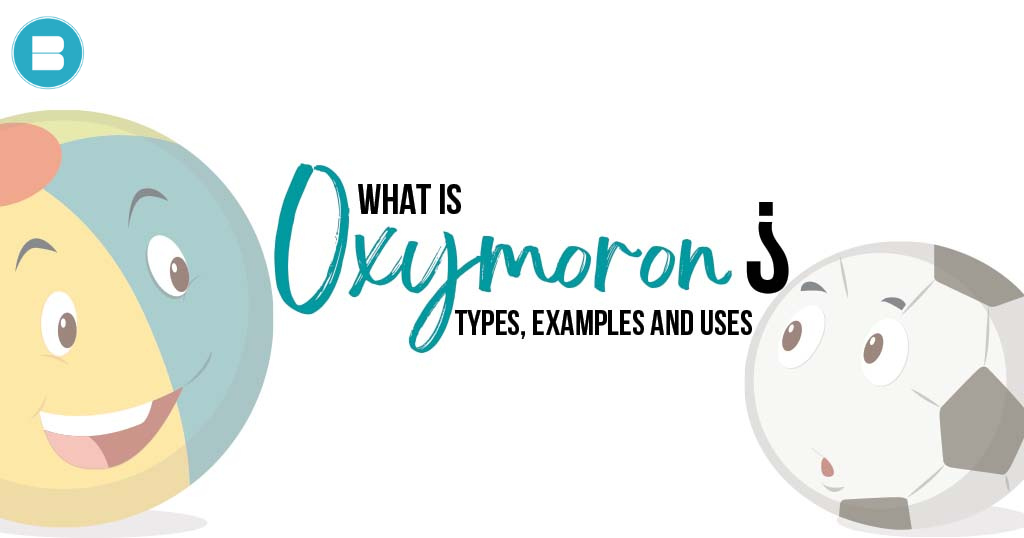
Oxymoron: Definition, Types, Uses, & Examples
Many people have a doubt “What is Oxymoron“? An oxymoron is a literary device in which two seemingly contradictory words or concepts are combined in order to create a rhetorical effect. The combination of the two words often has a paradoxical or incongruous effect and is used to create emphasis or make a statement more powerful. Some common examples of oxymorons include “jumbo shrimp,” “deafening silence,” and “sweet sorrow.” Read: Learn what is Alliteration? Definition, Types, & Uses of Alliteration. The term “oxymoron” comes from the Greek “oxys” and “moros,” which mean “sharp” and “dull,” respectively. Oxymorons are commonly used in literature, poetry, and everyday speech as a means of emphasising a point or creating irony. They can be used to add depth and complexity to a work and to challenge readers or listeners to think more critically about the meaning of the words and phrases being used. “Ordinary riches can be stolen, but real riches cannot.”– Oscar Wilde For example, in the quote above, the phrase “ordinary riches” contradicts itself, as riches by definition are not ordinary. It implies that there are two types of riches: one that is ordinary and can be stolen, and one that is real and cannot be stolen. This quote is pointing out that material possessions, which are often considered to be a form of wealth, can be taken away by others. The speaker is suggesting that true riches, or wealth that cannot be taken away, are something deeper or more meaningful than material possessions. Some possible examples of these deeper or more meaningful riches could be one’s inner strength, knowledge, wisdom, or personal relationships. The speaker implies that true richness can’t be stolen but rather is always with you; it’s intrinsic. This quote not only emphasises the difference between material and inner wealth but also serves as a reminder that true wealth can’t be taken away but also has to be cherished and cultivated. You may also read: List of Top 10 Nikita Singh Books of All Time What is Oxymoron? Types of Oxymoron. An oxymoron is a figure of speech in which two words with opposing or contradictory meanings are combined to create a rhetorical effect. There are several types of oxymoron, including: Some examples of oxymorons in literature can be found in literature, poetry, and popular phrases, such as “wise fool,” “sweet sorrow,” and “the only constant is change.” These phrases often provide insight into complex emotions or ideas and help to convey them in a more powerful way. You may also like: How to Publish a Book | Publish Your Book | BlueRoseOne How to write the perfect oxymoron for your next book When writing an oxymoron, it’s important to consider the context and tone of the piece. The use of oxymorons can add complexity and depth to the writing and convey complex emotions or ideas in a more powerful and evocative way. However, it’s essential to use them sparingly, as overusing oxymorons can make the writing seem confusing or contrived. Here are some tips for writing an oxymoron: You may also like: Top 10 Real Life Stories to Read Online Remember, even if an oxymoron makes the text more complex, it is meant to be understood by readers. So, always keep the readers in mind while using an oxymoron, and make sure they are not making the text harder to comprehend. I hope this was useful for you to understand the imaginative reality. So, the next time you see an oxymoron, you’ll be able to spot and write it. Happy Reading!
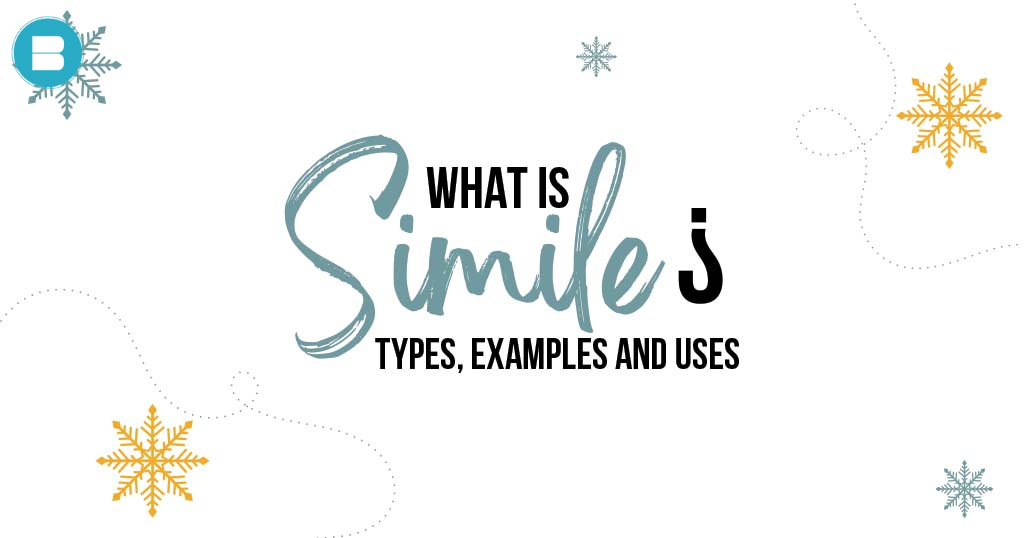
What is Simile: Definition, Types, Uses, & Examples.
Shine in your life like the sun. I just used a simile and motivated you at the same time. A simile is a figure of speech that compares two unlike things using the words “like” or “as.” It is used to create an analogy or to describe something in a more imaginative or interesting way. Similes are a way of evoking an image and giving your readers a new way of looking at something they may have previously taken for granted. In the above quote, the simile implies that the person in question should radiate positivity, warmth, and light, just like the sun does in the sky. Read: List of 10 Best Libraries in Bangalore for Bookworms By making this comparison, I encouraged you to strive to be an inspiration and guide to others in the same way the sun is to the world. The simile suggests being bright, warm, and always providing light, no matter what the circumstances are, and being able to brighten up the lives of those around you. Another example to help you understand the simile web: “Life is like riding a bicycle. To keep your balance, you must keep moving.”– Albert Einstein The simile “Life is like riding a bicycle” compares the experience of living one’s life to the experience of riding a bicycle. The metaphor draws attention to the idea that in order to maintain balance, you have to keep moving forward. The simile expresses the idea that in order to have a successful and fulfilling life, you have to keep moving forward and be in constant motion, much like how to balance on a bicycle to maintain balance, you have to keep moving forward. The simile expresses the idea that in order to have a successful and fulfilling life, you have to keep moving forward and be in constant motion, much like how to balance on a bicycle. The simile also highlights the idea that in order for both a bicycle and life to work well, one must actively engage in them and make adjustments as needed. The quote by Albert Einstein is a simple yet powerful way of explaining that life requires effort and adaptation to maintain balance and equilibrium. You may also like: How to Write An Epilogue: Step-by-Step Guide While simile is a whole other world, there are slight chances that one could confuse it with metaphors… One reason why someone might confuse similes and metaphors is that both figures of speech involve comparing two things. However, similes and metaphors differ in how they make the comparison. A simile compares two things using the words “like” or “as,” while a metaphor asserts that one thing is another. For example, “Life is a journey” would be a metaphor, and “Life is like a journey” would be a simile. Another reason why people might get confused is that they are similar in the sense that they both use comparisons to create imagery and convey deeper meanings and connotations. Additionally, both figures of speech are often used in literature, speech, and everyday language and can be used interchangeably in some cases. It’s easy to see how the distinction between the two could get blurred. It’s important to remember that a simile uses “like” or “as” to make a comparison, and a metaphor equates two things without using these words. With practise and exposure, it’s easier to distinguish between them. You may also read: How to Publish a Book? | Publish Your Book | BlueRoseOne What is Simile? What are the types of Simile. There are many different types of similes, but some common ones include: In conclusion, Similes are frequently used in literature, speech, and common language and can assist writers add imagery and description. They can be an excellent approach to help the reader visualise a scenario or idea and elicit emotions. Read: What is Conflict in a story? How to structure a story? However, it is vital to realise that similes are not the same as metaphors, which state that one item is the same as another. Similes utilise the words “like” or “as,” whereas metaphors do not. It will become easier to distinguish between similes and metaphors with experience and exposure. Till the time I get back as fast as the day ends in winters, I wish you a splendid time reading and hunting for similes, anaphors, metaphors, irony, and many more. Happy Reading.
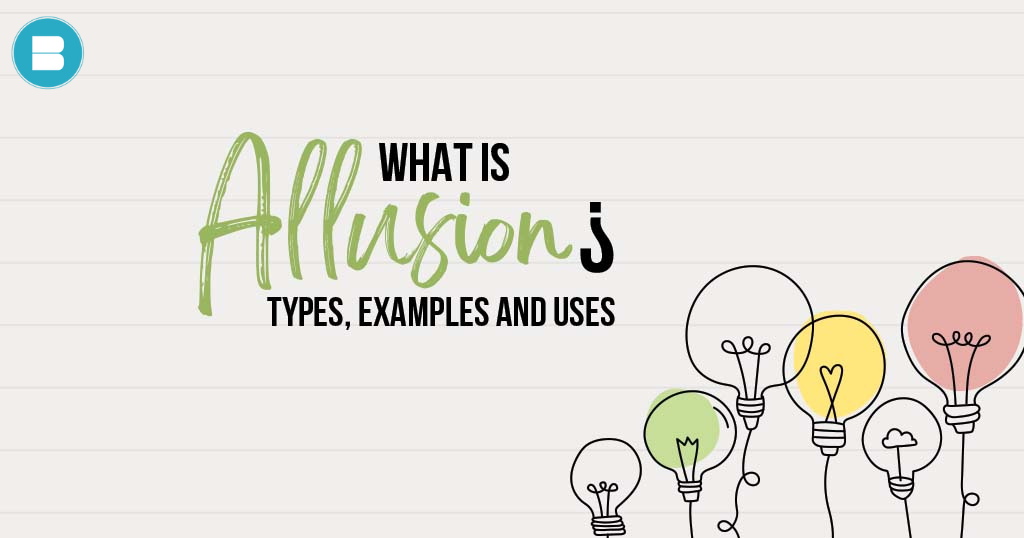
What is Allusion: Definition, Types, Uses, & Examples.
“I have measured out my life in coffee spoons” said T.S. Eliot in The Love Song of J. Alfred Prufrock. This is an allusion to the Greek myth of Narcissus, who fell in love with his own reflection in a pool of water and wasted away, staring at his own image. The allusion suggests that the speaker, like Narcissus, has been preoccupied with his own thoughts and feelings, and has not lived a full and active life. The phrase “measured out my life in coffee spoons” also suggests that the speaker’s life has been mundane and uneventful. You may also like: What is Cozy Mystery? A Begginer’s Complete Guide But what is allusion? An allusion is a figure of speech that refers to a person, place, thing, or event. It is a brief and implicit reference to something, often a work of literature, film, or music. An allusion is usually made to add depth or meaning to a work, or to create a connection with the reader or listener. Allusions can be made to historical events, myths, or other works of literature, and they are often used to add layers of meaning to a text or to make a point in a subtle way. For example, if someone says “he was acting like a modern-day Romeo,” they are making an allusion to Shakespeare’s play “Romeo and Juliet,” in which Romeo is a passionate and tragic young lover. The speaker is implying that the person they are talking about is acting in a similar way to Romeo, perhaps by being overly emotional or acting impulsively. Read: What is Proofreading? How can you do it by yourself. By using this allusion, the speaker is adding depth and meaning to their statement, and they are also trying to create a connection with the listener by referring to a well-known work of literature. Allusions can be powerful tools for writers and speakers because they allow them to add depth and meaning to their words without having to explain everything in detail. However, it is important to be careful when using allusions, as they can be confusing or even meaningless to people who are not familiar with the work being referred to. People frequently make references in regular discourse, sometimes without realising it and sometimes without knowing what they are alluding to. These allusions are usually to popular culture, such as movies, books, music, famous figures, and so on. For example – Her dimples are like kryptonite to me. (Superman’s weakness) She felt like she had a golden ticket. (Charlie and the Chocolate Factory) You may also like: How to Publish a Book? | Publish Your Book | BlueRoseOne How can you use Allusions in your writing? Allusion can help you to make connections with other texts and ideas, and to enrich your writing with layers of meaning. Here are a few tips for using allusions in your writing: You may also read: Best Udemy Courses for Self-Publised Authors What are the Kinds of Allusion? There are several kinds of allusion that writers may use in their works. Here are a few common types: Difference between Analogy and Allusion An analogy is a comparison between two things that are similar in some way. It is used to explain or clarify something by showing how it is similar to something else. An allusion, on the other hand, is a brief or indirect reference to a person, place, thing, or event from literature, history, or culture. It is used to add depth and complexity to a work by making connections with other texts or ideas. Here is an example of each: Analogy: “Reading a book is like going on a journey. Each chapter is a new destination, and the characters are the guides who lead you through the story.” In this analogy, the writer is comparing the act of reading a book to going on a journey. The chapters of the book are compared to different destinations, and the characters are compared to guides. This analogy is used to explain or clarify the experience of reading a book by showing how it is similar to the experience of going on a journey. The writer is using the familiar concept of a journey to help the reader understand the less familiar concept of reading a book. By understanding the similarities between the two, the reader may be better able to understand and appreciate the experience of reading a book. Allusion: “She was a real-life Scarlett O’Hara, always managing to land on her feet no matter what life threw her way.” In this allusion, the writer is making a reference to the character Scarlett O’Hara from the novel “Gone with the Wind.” By describing the person being described as a “real-life Scarlett O’Hara,” the writer is implying that this person is similar to the character in some way. In this case, the allusion suggests that the person is resilient and resourceful, always able to find a way to “land on their feet” no matter what challenges they face. By making this connection to the well-known character Scarlett O’Hara, the writer is adding depth and complexity to the description of the person being described. Read: List of Top 10 Most Popular Historical Fiction Books of all Time. Concludingly, Allusion is a potent literary method that writers can use to add depth and complexity to their work by connecting it to other texts and concepts. Writers can enrich their writing and increase their readers’ understanding and appreciation of their work by carefully selecting and clarifying their allusions. When employing allusions, it is critical to choose them carefully, explain them appropriately, use them sparingly, and keep cultural differences in mind. Keeping this in mind allows writers to incorporate references into their writing in an efficient and graceful manner. You may also like: List of 10 Best Libraries in Portsmouth for Book Lovers
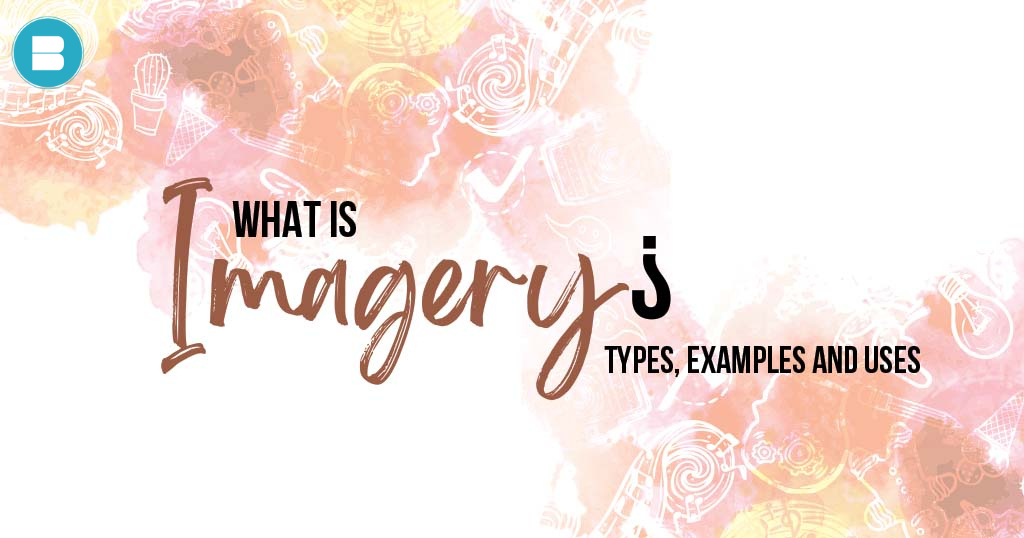
What is Imagery: Definition, Types, Uses, & Examples.
Whether you’re a writer or a reader, you must have at least once wondered, “What is imagery?” and why is this word so prevalent in the literary dictionary. And an outline must have familiarised you with how a proper use of this literary device can enhance your writing and transport one into the scenario with your favourite characters. Read: Here’s a list of Top 10 Popular Drama Fiction Books of all Time. Authors that accomplish this can make it appear smooth, but it doesn’t typically happen that way; to really catch readers and make them feel like they’re a part of the story, you’ll need to be exact with your word choice and learn to master imagery. Great imagery provides readers with a sensory experience they will not soon forget. What is Imagery? Imagery is a literary device that uses figurative language to evoke a sensory experience or to paint a picture for the reader with words. Writers appeal to a reader’s senses of sight, taste, smell, touch, and sound, as well as internal emotion and feelings, by using good descriptive language and figures of speech. As a result, imaging encompasses not just visual representations or mental thoughts, but also physical experiences and emotional emotions. “Lovers and madmen have such seething brains,Such shaping fantasies, that apprehendMore than cool reason ever comprehends.” “A Midsummer Night’s Dream by Williams Shakespeare“In the lines above, Shakespeare uses imagery to describe the passionate and imaginative nature of lovers and madmen. He suggests that their “seething brains” and “shaping fantasies” allow them to perceive and understand more than what can be grasped by “cool reason.” The phrase “apprehend more than cool reason ever comprehends” suggests that the imaginative and passionate states of mind allow one to grasp a deeper understanding or appreciation of something that cannot be understood through rational thought alone. You may also like: What is Cozy Mystery? A Beginner’s Complete Guide There are several types of imagery: including visual imagery, auditory imagery, olfactory imagery, gustatory imagery, and tactile imagery. You may also like: Unlocking success: How to sell books online effectively How to use Imagery? There are several ways to use imagery effectively in writing: In conclusion, imagery is an important literary device that helps writers create vivid and descriptive images in the reader’s mind. By using descriptive language, figurative language, and evoking the senses, writers can help their readers experience the story more vividly and emotionally. Read: What is Copyediting? How you can do it by yourself? Whether used to set the mood or simply to bring the story to life, imagery is a powerful tool for engaging the reader’s senses and imagination. Whether in fiction or nonfiction, well-crafted imagery can bring a text to life and make it more enjoyable and memorable for the reader.
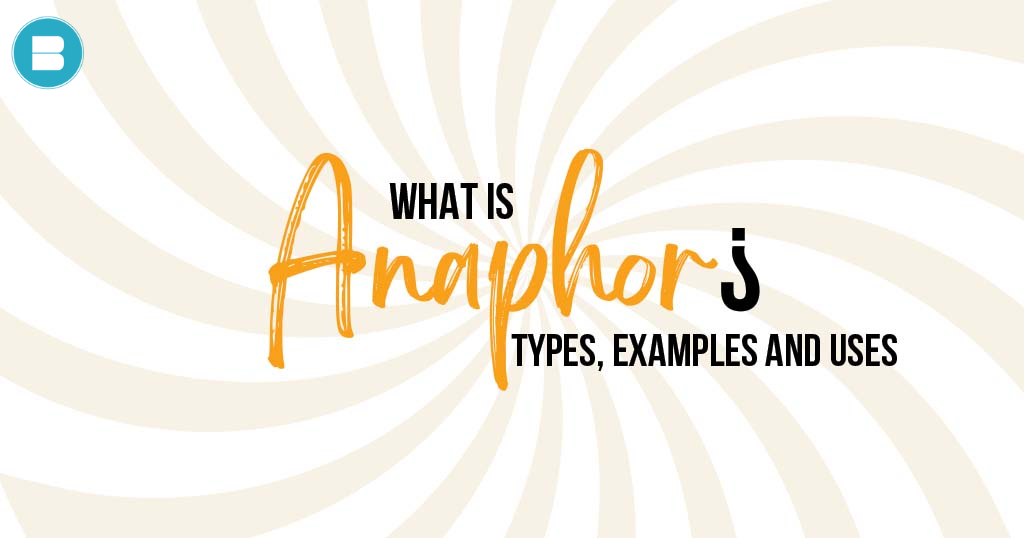
What is Anaphor: Definition, Types, Uses, & Examples.
“We came, we saw, we conquered” – Julius Caesar written by William Shakespeare. The phrase “we came, we saw, we conquered,” the pronoun “we” is used as an literary device “Anaphor”. It refers back to the subject of the sentence, which is “we,” and helps to establish a connection between the three clauses. The use of the anaphor “we” helps to create a sense of continuity and coherence within the phrase, as it avoids repeating the subject noun “we” in each clause. It also adds emphasis to the actions of the subject, as the repetition of “we” helps to reinforce the idea that the subject was the agent of the actions described in the clauses. Read: What is Copyediting? How you can do it by yourself? In this case, you would be asking what is anaphor? In the phrase “we” also serves to create a sense of unity and shared purpose among the subject, as it suggests that they were all involved in the actions described. This helps to convey a sense of pride and accomplishment, as the subject is able to take credit for the actions described in the clauses. An anaphor is a word or phrase that refers back to a noun or noun phrase that has previously been stated. It is used to prevent repeating the same term or noun phrase, which can be tedious and time-consuming. The literary device ” Anaphor” is usually a pronoun like “he,” “she,” “it,” “they,” or “them,” or a relative pronoun like “who,” “whom,” or “whose.” An anaphor can also be referred to as a back-reference or a reflexive pronoun. An anaphor is employed in a writing or dialogue to establish consistency. It aids in connecting thoughts and concepts and creating a sense of continuity and flow. It can also be used to emphasise or call attention to a specific noun or noun phrase. Consider this sentence: “The president, who had just been elected a year previously, was already facing impeachment.” In this line, the relative pronoun “who” is an anaphor that relates back to the noun “president,” emphasising the president’s recent election. You may also like: Top 10 Real Life Stories to Read Online Anaphors are classified into three types: personal pronouns, reflexive pronouns, and relative pronouns. The conclusion would be, anaphors are words or phrases that refer back to a previously mentioned noun or noun phrase in order to establish continuity and coherence in writing. Read: List of 10 Best Libraries in Mumbai for Bookworms. Anaphors must be used correctly to maintain consistency and clarity in writing, and they can be a great tool for writers to add depth and complexity to their work. They are an important part of language and writing and play a key role in good communication.
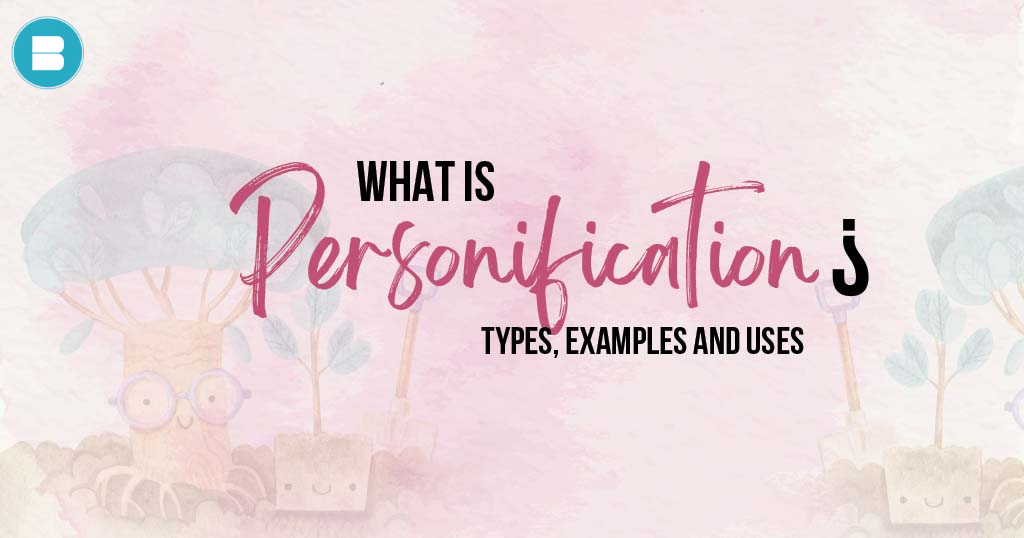
What is Personification? Definition, Types, Uses & Examples.
“If dreams were a bird, it would fly high to watch the world from above, how big things look small when accomplished.”― Arshia Mittal Arshia Mittal compares her dreams to a bird. The phrase “it would fly high” suggests that dreams have agency and can take action on their own, in this case by flying. The phrase “watch the world from above” further suggests that dreams have the ability to see and observe as a bird might. The Saying “how big things look small when accomplished” suggests that dreams have the ability to perceive and understand the world around them and to compare and contrast different things. That my bibliophiles is personification. Read: Book Review – Woman 2 Point Ohh by Geeta Fadnavis Personification is a figure of speech that describes non-human things or abstract notions as if they were human. This can be done to give these non-human items or notions human-like traits or to make complex ideas more simply conveyed to an audience. In literature, poetry, and song lyrics, personification is frequently employed to give depth, passion, and descriptive detail to a piece of work. Personification can be used to describe the sun as a “golden giant” or the wind as a “whispering breeze.” Personification can serve to make writing more interesting and approachable for readers, as well as a strong tool for communicating complicated concepts or emotions in a more accessible manner. Overall, as a literary device, many people have a doubt what is personification? serves to provide readers with imagery and links between the live and inanimate. Personification thus enables writers to convey content in a creative and artistic manner. These figures of speech help the reader understand concepts and comparisons, decipher symbols and themes, and appreciate language. Below are some instances of how personification can be used effectively: You may also read: Top 10 Rhetorical Devices Every Writer Should Know You may also: 100+ Adjectives That Start With N (With Examples & Definitions) Here are a few examples of personification from books: To summarise, personification is a literary device that can be employed in writing to provide depth, emotion, and descriptive detail. Writers can generate vivid and relatable imagery that helps readers envision and grasp complicated ideas or emotions by attributing human features, emotions, or behaviours to non-human objects, animals, or abstract concepts. Read: Here’s a list of 10 most popular short story books of all time. Personification is frequently employed in literature, poetry, and song lyrics, and it can help readers find writing more intriguing, engaging, and approachable. It can also be utilised to create amusing or lighthearted effects, as well as to engage the imagination and urge readers to think more creatively. Overall, personification is a powerful tool for authors who want to present knowledge in a unique and artistic way, and it can assist to enhance the reading experience for audiences of all ages. Publish your book for free with BlueRoseONE and become a bestselling author. Don’t let your dream of becoming an author fade away, grab the opportunity now and publish your book – be it fiction, non fiction, poetry or more. You may also like: 10 Magical Books That Combine Christmas and Fantasy
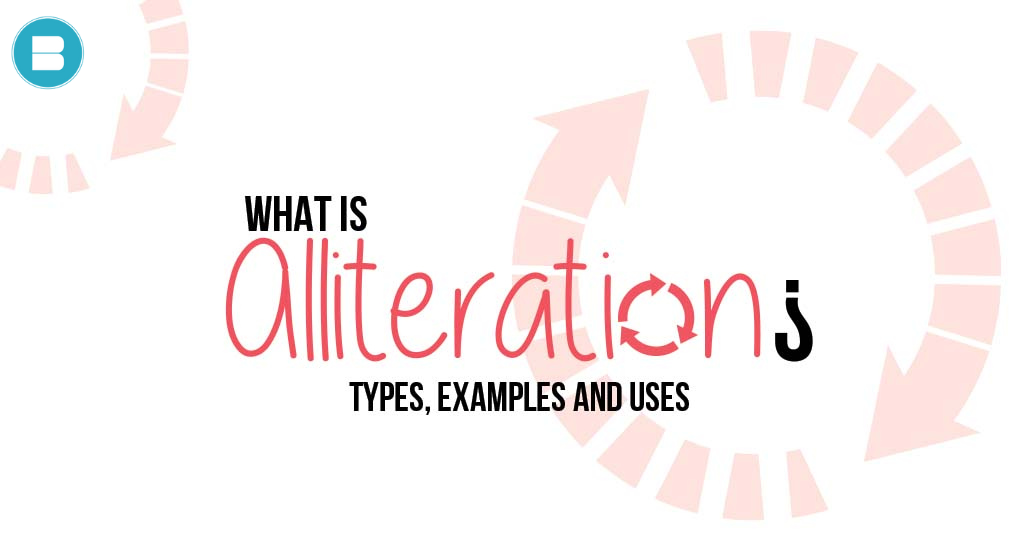
What is Alliteration: Definition, Types, Uses, & Examples.
“If it’s all been dream and deliriummay death ripen me in my dream.”― Gabriela Mistral, Madwomen: Poems of Gabriela Mistral One of the most beautiful and perfect examples of Alliteration. The word alliteration derives from the Latin word littera, meaning “letter of the alphabet”. Alliteration is a literary device in which the same sound, usually a consonant, is repeated at the beginning of many words in a phrase or sentence. This sound repetition generates a musical and memorable impact that grabs the reader’s attention and emphasises the words that are repeated. Read: What is Irony? Types, Definition, Uses & Examples of Irony. Alliteration is used in Old English, Old Norse, Old High German, and Old Irish alliterative verse. It was an essential component of the Sanskrit Shlokas. Alliteration, often known as start rhyme or head rhyme, is a common literary element in our everyday lives. Poets, advertisers, and headline writers all use the strategy of repeating initial letter sounds to get people’s attention. It also adds attention, harmony, and rhythm to poetry. What is Alliteration? Alliteration is defined in literature as the prominent repetition of identical starting consonant sounds in subsequent or closely related syllables within a group of words, even if they are spelled differently. Some literary scholars consider vowel sound repetition or repetition at the end of words alliteration. Alliteration is frequently employed in prose to bring the reader’s attention to a certain passage and make it stand out. Alliteration is also widely utilised in character naming to give them more memorable names that are enjoyable to hear aloud. Read: Here’s a list of 10 Most Popular Romance Books of all time. “That you must read” While the function of alliteration is similar in both poetry and prose, poets frequently utilise it to build a poem’s rhythm and for its aural aspects. How is Alliteration used in Prose? Alliteration can be used to focus the reader’s attention to and emphasise specific words or ideas. In the phrase “The sun was beaming brightly on the beautiful beach,” for example, the repetition of the “b” sound emphasises the terms “beach” and “brightly.” By repeating the same tone throughout the sentence, it can be used to produce a unified and harmonic text. This repetition contributes to the writing’s impression of coherence and flow. Read: List of 10 Best Libraries in Kolkata for Bookworms that you must visit. By producing a melodious and catchy impact, alliteration can help make language more memorable and engaging. This is especially beneficial in advertising slogans, where alliteration is frequently utilised to generate a distinctive phrase that the reader remembers. Alliteration can also be utilised to inject humour into a sentence. By repeating a funny or absurd sound, such as “f” or “p,” you might generate a lighter and comical tone in your work. Some examples of Alliteration to make you understand the concept a bit better – You may also like: Too Good To Be True a Book By Prajakata Koli How is Alliteration used in Poetry? The primary reason for using alliteration in poetry is that it sounds good. It’s a technique for capturing the attention of readers or listeners. It’s also an obvious way to indicate that the alliterative words are thematically related, and it draws attention to the subject matter. The second function of alliteration in poetry is to create mood. While a vast range of words might theoretically be employed to describe any subject, some letter sounds have distinct implications amplified by repetition. Consider the “s” sounds in the words “solace,” “serene,” and “silence.” It nearly makes things sound whispered, and depending on the context, it might generate an impression of mystery, solemnity, or closeness. In fact, there is a term for the repeating of this type of letter sound; it is called sibilance, and it also applies to consonants beginning with “ship,” “zip,” “chasm,” “genre,” and “jealous.” The opposite is true for harsh consonant sounds like “ck” in “cat” or “g” in “good”. The additional names for alliteration—an initial rhyme or head rhyme—allude to the third reason for using it. Alliteration, like perfect rhyme, adds melody and rhythm to poetry and gives it a feeling of how it should sound when read aloud. Because perfect rhyme is not widely used in contemporary poetry, alliteration and its brothers, assonance, and consonance, are useful tools to have in your toolbox. Some examples of Alliteration to make you understand the concept a bit better – Had we but world enough, and time,This coyness, lady, were no crime.We would sit down, and think which wayTo walk, and pass our long love’s day. In this small excerpt from the poem To His Coy Mistress by Andrew Marvell, the emotion is subtlety expressed through alliteration where the letters ‘w’, ‘c’, and ‘l’ have been used in a rhythmic form. Closed my lids, and kept them close,And the balls like pulses beat;For the sky and the sea, and the sea and the skyLay like a load on my weary eye,And the dead were at my feet In this small excerpt from the poem The Raven by Edgar Allan Poe, you can see that the sound ‘ck’ is there in closed, kept, and close; which shows that alliteration is purely based on sound and not the letter sometimes. This poem has some beautiful examples of alliteration all over. Alliteration is a lyrical element that has made its way into everyday life. It can be found in news headlines, TV show titles, commercial slogans, and company names. Coca-Cola, Dunkin’ Donuts, Krispy Kreme, Too Hot To Handle and Weight Watchers are just a few examples of catchy alliteration. Alliteration makes the names and titles catchy and helps the listener and reader retain and remember the name a lot faster and for a long time. Read: How to write a story plot? Tips, Tricks, & Types of Story Plots. The fact that alliteration is a key component of these word games should serve as a warning to authors to employ alliteration sparingly. A few appropriate repetitions will improve your vocabulary, but too many will result in a tongue twister. Before I end this journey of alliteration, here are some exceptional examples of books that are famous for its alliterative content – Finally, alliteration is…
